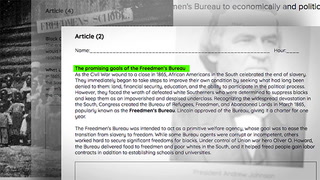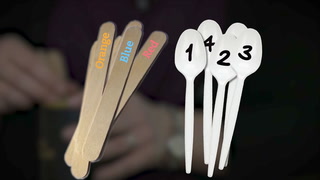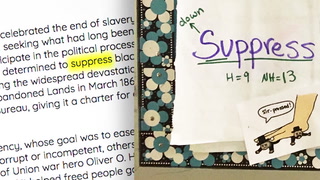Series The Power of Collaboration for ELLs: Sticks & Spoons: An Engagement Strategy
Save to My Resources
PLEASE CREATE A NEW ACCOUNT OR LOG IN TO ACCESS THIS CONTENT
Enjoy your first video for free. Subscribe for unlimited access.
Have questions about subscribing?
Click Here to learn more about individual subscriptions.
Click Here to learn more about School and Institution access.
Discussion and Supporting Materials
Thought starters
- How do the sticks and spoons promote equity of voice?
- Why is this strategy especially beneficial for English Language Learners?
- How does this strategy encourage student collaboration?
In Partnership With:

School Details
Horning Middle School2000 Wolf Road
Waukesha WI 53186
Population: 680
Data Provided By:

Teachers
Meredith Sweeney
Shannon Kay
6 7 8 / Coach
Newest
|
4 MIN
|
5 MIN
|
5 MIN
UNCUT CLASSROOMS
| TCHERS' VOICE
English Language Arts














16 Comments
Michael Burnett Jun 13, 2020 10:12am
Each student has an equal chance of being called upon at any moment. This keeps favorites (or non-favorites) from being selected more often.
Because each student might be called upon at any moment, they have to focus and listen to what is being asked/answered. This keeps the students engaged in the moment of the class.
Teamwork is a great collaboration building tool. By having the groups divided not just into stick teams, but also into spoon cohorts, the students are involved in 2 simultaneous groups where collaboration can occur.
penny oates May 6, 2020 10:35pm
This is really inventive
Ann Sues Feb 13, 2020 12:17pm
Each child has an equal likelyhood of being drawn so they are responsible for the same information. Students are able to practice and build confidence before having to speak infront of a large group.
Ashley Peralta ... Feb 12, 2020 11:01am
This strategy is great especially if you have English Language Learners. They are able to collaborate with a group and listen to team members, then have a chance to answer out to the class with the help of their group. This hold students accountable because it is random and they have to be prepared to share. This also helps with equalizing the responses from the class instead of being the same few students, and gives others a chance to answer as well as the expectation to answer.